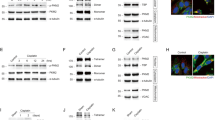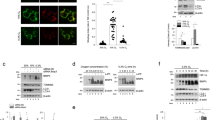Abstract
We investigated mechanisms of cell death during hypoxia/reoxygenation of cultured kidney cells. During glucose-free hypoxia, cell ATP levels declined steeply resulting in the translocation of Bax from cytosol to mitochondria. Concurrently, there was cytochrome c release and caspase activation. Cells that leaked cytochrome c underwent apoptosis after reoxygenation. ATP depletion induced by a mitochondrial uncoupler resulted in similar alterations even in the presence of oxygen. Moreover, inclusion of glucose during hypoxia prevented protein translocations and reoxygenation injury by maintaining intracellular ATP. Thus, ATP depletion, rather than hypoxia per se, was the cause of protein translocations. Overexpression of Bcl-2 prevented cytochrome c release and reoxygenation injury without ameliorating ATP depletion or Bax translocation. On the other hand, caspase inhibitors did not prevent protein translocations, but inhibited apoptosis during reoxygenation. Nevertheless, they could not confer long-term viability, since mitochondria had been damaged. Omission of glucose during reoxygenation resulted in continued failure of ATP production, and cell death with necrotic morphology. In contrast, cells expressing Bcl-2 had functional mitochondria and remained viable during reoxygenation even without glucose. Therefore, Bax translocation during hypoxia is a molecular trigger for cell death during reoxygenation. If ATP is available during reoxygenation, apoptosis develops; otherwise, death occurs by necrosis. By preserving mitochondrial integrity, BCL-2 prevents both forms of cell death and ensures cell viability.
This is a preview of subscription content, access via your institution
Access options
Subscribe to this journal
Receive 50 print issues and online access
$259.00 per year
only $5.18 per issue
Buy this article
- Purchase on Springer Link
- Instant access to full article PDF
Prices may be subject to local taxes which are calculated during checkout
Similar content being viewed by others
Author information
Authors and Affiliations
Rights and permissions
About this article
Cite this article
Saikumar, P., Dong, Z., Patel, Y. et al. Role of hypoxia-induced Bax translocation and cytochrome c release in reoxygenation injury. Oncogene 17, 3401–3415 (1998). https://doi.org/10.1038/sj.onc.1202590
Received:
Accepted:
Published:
Issue Date:
DOI: https://doi.org/10.1038/sj.onc.1202590
Keywords
This article is cited by
-
Effects of hypoxia and reoxygenation on mitochondrial functions and transcriptional profiles of isolated brain and muscle porcine cells
Scientific Reports (2022)
-
Carnosine and l-arginine attenuate the downregulation of brain monoamines and gamma aminobutyric acid; reverse apoptosis and upregulate the expression of angiogenic factors in a model of hemic hypoxia in rats
Naunyn-Schmiedeberg's Archives of Pharmacology (2020)
-
A 3D microvascular network model to study the impact of hypoxia on the extravasation potential of breast cell lines
Scientific Reports (2018)
-
Folic Acid Exerts Post-Ischemic Neuroprotection In Vitro Through HIF-1α Stabilization
Molecular Neurobiology (2018)
-
Roles of microRNA-1 in hypoxia-induced apoptotic insults to neuronal cells
Archives of Toxicology (2016)



